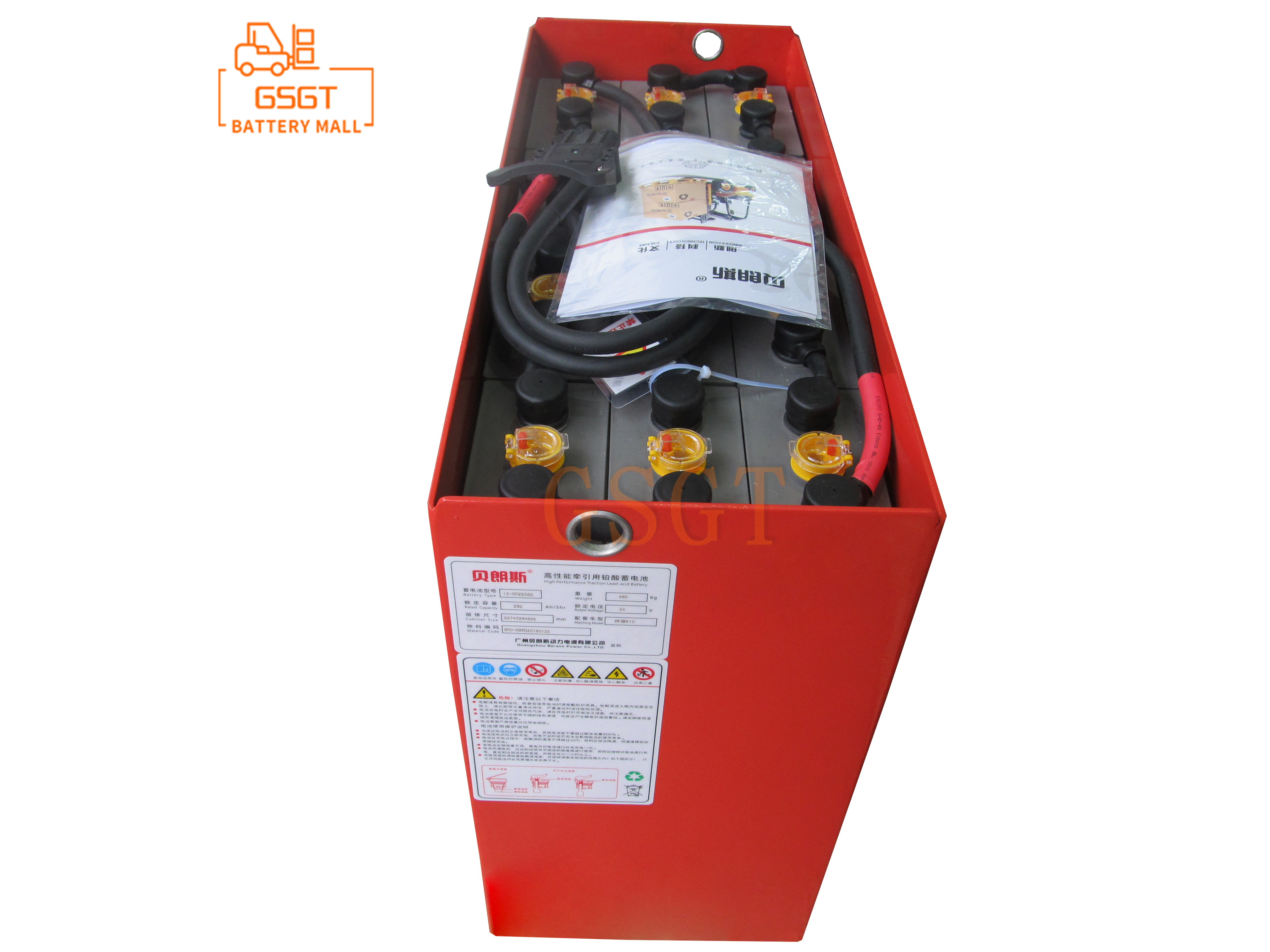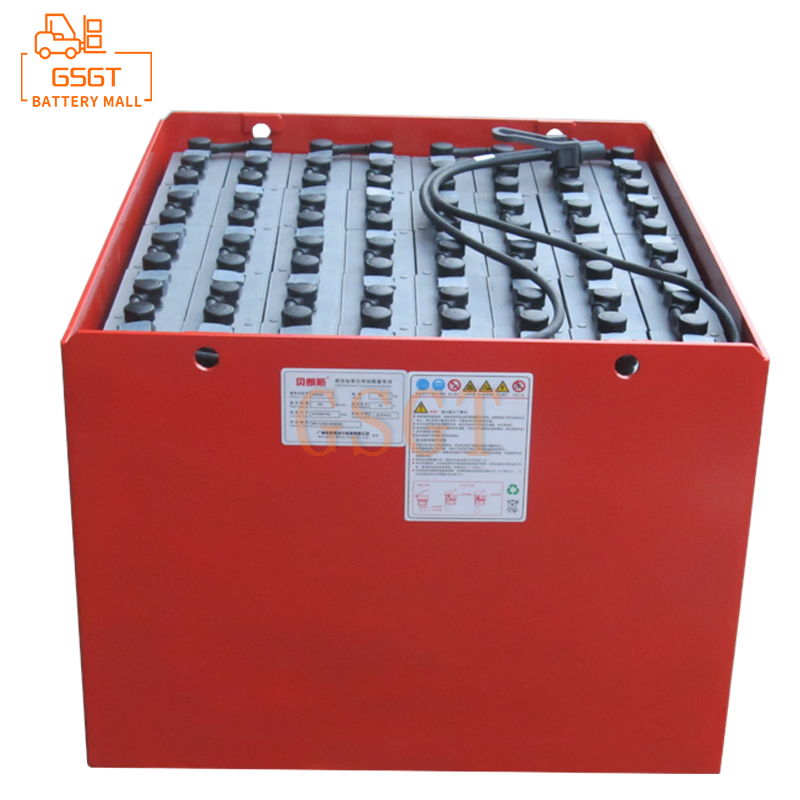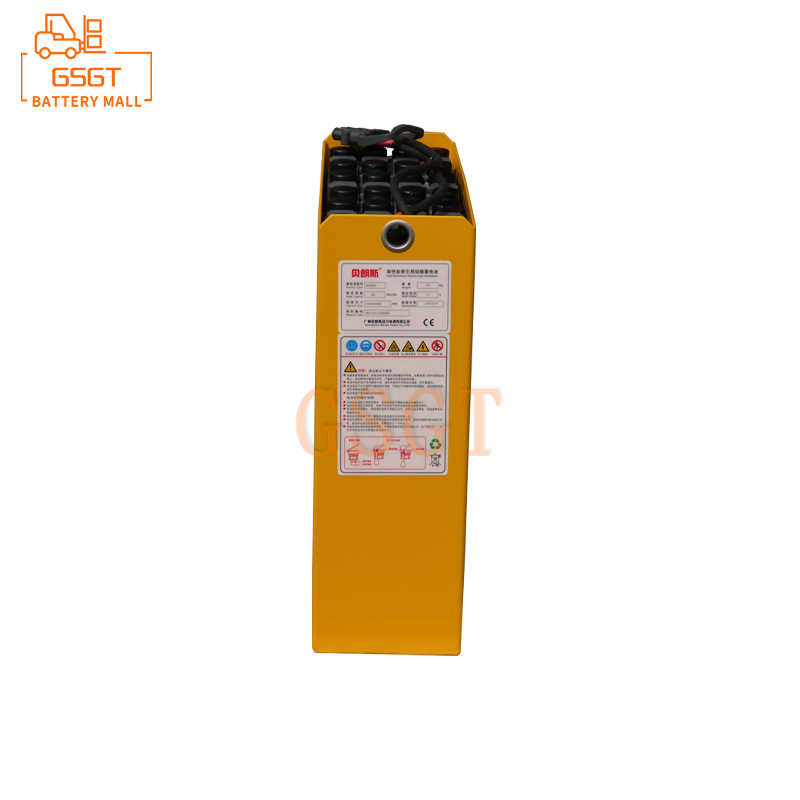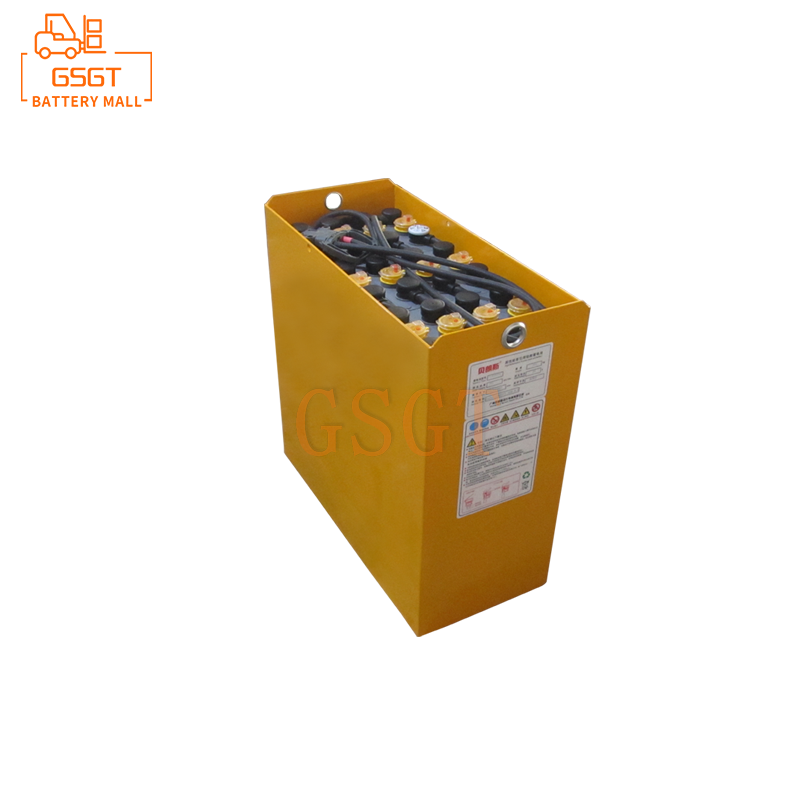Time:2025-04-03 11:51:25
Browse:676
In the power system of forklift truck, traction lead-acid battery occupies the core position, and its installation quality is directly related to the operation performance, safety and the service life of the battery itself. To properly install lead-acid batteries for forklift trucks, a series of key steps must be strictly followed. Errors in any one step may cause serious problems. The following details these critical installation steps and their importance.
Comprehensive preparation before installation
◆Site planning and security
It is important to choose a spacious, well-ventilated installation site away from fire, water, and flammable and explosive materials. Forklift batteries are heavy and may need to be moved during installation. A large space can avoid collision with peripheral equipment and personnel. Good ventilation prevents the build-up of hydrogen produced when the battery is charged, reducing the risk of explosion. For example, in some factory workshops, if the battery installation area is set in a narrow corner and the ventilation is not good, once the hydrogen concentration reaches a dangerous value, it may cause an explosion when it encounters a small spark. The installation site should be set up obvious warning signs, strictly prohibit irrelevant personnel to enter, equipped with necessary fire equipment, such as carbon dioxide fire extinguishers, in order to cope with possible emergencies.
◆Tools and materials inventory
Proper installation tools are required to ensure smooth installation. Common tools include torque wrenches, socket wrenches, screwdrivers, insulation gloves, and protective glasses. The torque wrench is used to ensure that the battery connection bolt reaches the specified torque to avoid excessive loose contact resulting in poor heating, or excessive tight damage to the bolt and battery pole. For example, when installing the battery in a logistics warehouse, because the torque wrench is not used, the bolt is tightened with experience, resulting in some connection points loosening, and the battery connection frequently sparks when the forklift is running, which not only damages the battery pole, but also nearly causes a fire. At the same time, prepare cables, wiring terminals, insulation tapes and other materials that meet specifications. Select the cross-sectional area of the cables according to the rated current of the forklift battery to ensure that the cables can carry enough current and avoid heating overload.
◆ Battery inspection and acceptance
Before installation, the new forklift traction lead-acid battery must be carefully inspected. In terms of appearance, check whether the battery shell is cracked, damaged, and whether the electrolyte has signs of leakage. If the shell is found to have minor cracks, during the battery charging and discharging process, the electrolyte may ooze out, corroding the surrounding equipment, and as the battery is used, the cracks may expand, causing the battery to fail to work properly. Check whether the battery pole is deformed or oxidized. The surface of the pole should be smooth and free of rust; otherwise, the reliability of the connection will be affected. At the same time, check whether the specifications, rated voltage, capacity and other parameters of the battery match the forklift. Different types of batteries have different sizes and performance. If the battery is incorrectly installed, it may not be able to provide enough power for the forklift, and even damage the electrical system of the forklift.
Precise operation in installation
◆Positioning and fixing of battery pack
According to the battery installation position of the forklift, place the battery pack in the correct position. In some forklifts, the battery pack needs to slide into the installation slot through the guide rail. At this time, ensure that the guide rail is clean and free of debris, and the battery pack can slide smoothly. During the placement process, pay attention to the correct direction of the battery pack, and the pole position corresponds to the electrical connection line of the forklift. Use dedicated battery mounting brackets and bolts to secure the battery pack to the forklift. The bolts should be tightened evenly to reach the specified torque to prevent the battery pack from shifting or colliding due to bumps during the forklift, which may damage the battery. For example, if the battery pack is not fixed firmly in the forklift used in the construction site, the battery may collide with each other due to shaking when driving on the rough road, resulting in the shell cracking and electrolyte leakage, which seriously affects the normal operation and safety of the forklift.
◆ Electrical connection specification implementation
When connecting the electrical circuit of the battery pack, first ensure that all tools and operators' hands are dry to avoid electric shock caused by humidity. According to the electrical schematic diagram, the connection wire between the individual cells in the battery pack is first connected, usually using a copper connection strip. The contact surface between the connection strip and the battery pole should be cleaned, and an appropriate amount of conductive paste should be applied to reduce the contact resistance and improve the conductive performance. Use the torque wrench to tighten the connection bolt to achieve the specified torque value, generally between 10-15 nm, the specific value depends on the battery specifications and manufacturer requirements. After connecting the internal circuit, connect the battery pack to the main cable of the forklift electrical system. The wiring terminals of the main cable should be tightly connected to the battery pole, the bolts should be tightened, and the connection points should be wrapped with insulation tape in multiple layers to prevent short circuit. For example, if the main cable terminal is not tightly connected, the connection will heat up when the forklift truck is discharged with a large current, accelerating the oxidation of the terminal and pole, which may eventually lead to poor contact and power interruption of the forklift truck.
◆ Electrolyte filling (if required)
For some lead-acid batteries drawn by forklift trucks that need to be filled with electrolyte on site, fill the electrolyte after the electrical connection is complete. First of all, ensure that the density of the electrolyte meets the requirements of the battery manufacturer, which is generally 1.28 grams/cubic centimeter (25 ° C). Use a dedicated electrolyte filling device to slowly inject the electrolyte into the battery cell. During the liquid injection process, observe the liquid level so that the liquid level reaches the upper and lower limits marked on the battery shell. After filling, do not charge or use immediately, it is necessary to stand for a period of time, so that the electrolyte fully penetrates into the inside of the plate, the general standing time is 2-4 hours. For example, if the electrolyte density is too high, it will accelerate the vulcanization of the battery plate and shorten the battery life; If the liquid level is too low, the upper part of the plate will be exposed to the air, resulting in plate oxidation, reducing the battery capacity.
Strict inspection and testing after installation
◆Appearance and connection check
After the installation is complete, check the battery pack again. Check whether the battery cover is damaged, whether the fixing support is secure, and whether the insulation tape at the electrical connection is intact, loose, or damaged. Check whether the connection bolts are not tightened or loosened, and ensure that all the connection parts are safe and reliable. Any slight appearance problem can be a sign of potential failure, such as broken insulation tape may cause a short circuit, loose connection bolts may cause poor contact heating.
◆Electrical performance test
Use professional battery testing equipment to test the electrical performance of the newly installed forklift traction lead-acid battery. First measure the open circuit voltage of the battery pack, which should be close to the rated voltage of the battery under normal circumstances, and the deviation is within the allowable range. Then perform a short-circuit current test (within a safe range and using professional equipment) to check whether the discharge capacity of the battery is normal. At the same time, use a multimeter to check whether the connection line between the battery pack and the electrical system of the forklift truck is properly connected. If the electrical performance is abnormal, rectify the fault in time. The fault may be caused by the battery quality or the electrical connection is incorrect during installation.
◆Trial operation and monitoring
After the completion of the above inspection and test, the forklift is tested for a short time. Start the forklift and observe whether the battery power display and charging indicator on the dashboard are working normally. During the operation of the forklift, pay attention to whether the battery pack has abnormal sounds, and feel whether the power output of the forklift is stable. After running for a period of time, stop to check the temperature of the battery pack, under normal circumstances, the battery temperature should not be too high, if the temperature rises significantly, there may be a short circuit in the battery or charging system failure. For example, when a forklift truck is installed with a new battery, it is found that the power is insufficient. After inspection, a single battery connection bar in the battery pack is loose, resulting in the single battery not working normally, affecting the output power of the entire battery pack. Through the trial operation and monitoring, the potential problems in the installation process can be found and solved in time to ensure the successful installation of the lead-acid battery pulled by the forklift, and provide reliable guarantee for the stable operation of the forklift.
Installation of forklift traction lead-acid battery is a rigorous and critical work, from the preparation before installation to the accurate operation of the installation process, and then to the strict inspection and testing after installation, each step is closely linked, any key step error may cause a series of serious problems, affecting the performance of the forklift, safety and battery life. Only by strictly following the correct installation process and paying attention to every detail can we ensure that the lead-acid battery drawn by the forklift is installed in place to provide stable power support for the efficient and safe operation of the forklift.

$1960

$10885

$1270

$1255

MESSAGE
Professional And Efficient
Security
Affordable Price
Professional Services